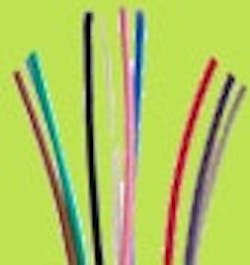Know Your Cuts of Cable
By Phil Burgert
Ask wire and cable manufacturers about the wiring and cable that’s best for use on machines, as well as in plant networks, and you’ll hear about multiple configuration possibilities. After all, there are many different operating parameters involving coolant and oils on machine tools, both high and low temperatures, welding flash and flexing of sensor cables on moving parts of other machines.
“There’s not one that will satisfy everybody,” says Tom Collen, director of marketing for Northwire, noting that combinations of wire and cable construction include insulation and jacketing materials, foil and braided shielding and corrugated armor.
For the industrial tray cable (ITC) and power-limited tray cable (PLTC) areas that are increasingly in demand over appliance wiring material (AWM) products, Collen has identified more than 16 million combinations of construction that conceivably could be manufactured with Underwriters Laboratories approvals. “There are many, many different construction opportunities,” says Collen. “It used to be that an AWM style was acceptable on a machine. There were customers that were pretty strict about having UL-listed cable, but it seems to be an emerging trend that more and more customers, due to their electrical inspectors paying attention to code, now demand that UL-listed ITC or PLTC trade cables be installed on machines.”
Understanding the cable’s operating environment avoids unanticipated failures from exposure to aggressive oils, fuels and solvents, excessive heat or cold, electromagnetic compatibility (EMC) noise and expected flexing nature of the cable, says Stephen Olsen, senior product manager at Lapp USA.
Olsen says there are cable constructions that resist most of these conditions but they need to be understood clearly to make a good cable selection. Another critical installation consideration is to understand local and national codes. As an example, he notes that a recent modification to the National Fire Protection Assn. 79 Code no longer permits the use of UL-recognized AWM cables in industrial machinery. Instead all cables must carry a UL-Listed approval as defined by the National Electrical Code, such as machine tool wire or 300 V communications cable approvals.
The best cables for use in and on industrial machinery for variable-frequency AC motor/drive applications are heavy-duty industrial variable frequency drive (VFD) output cables, states Patricia Saito-Carvallo, industrial marketing manager for Belden. These, she says, are capable of withstanding high-voltage spikes, high noise levels of electromagnetic or radio frequency interference and harsh environmental conditions.
To guarantee electrical performance and reliability of VFD cables, Saito-Carvallo says users should look for robust construction, including industrial-grade, cross-linked polyethylene (XLPE) insulation, which provides more-stable electrical performance than polyvinyl chloride (PVC), high-strand tinned copper circuit conductors and industrial-grade PVC jackets for sunlight and oil resistance.
“For connection of machines to an industrial network for control monitoring and data acquisition, as well as transmitting key operational performance data from the plant floor to an enterprise local area network, Category 5e or Category 6 industrial Ethernet cabling provides the best choice for transmitting signals,” says Saito-Carvallo.
Olsen adds that the key considerations for cable selection for an industrial network, from traditional discrete and analog signaling to complex fieldbus and industrial Ethernet networks, focus on the consistency and quality of the manufacturing process of the cable. As demand for high-speed performance and data-driven processes push the technology from the office closer to the process itself, industrially hardened cabling solutions are becoming essential to consistent performance.
“Stringent electrical and mechanical manufacturing controls are needed to ensure high-speed performance characteristics such as signal attenuation, EMC resistance and mechanical strength,” says Olsen. “Failure to address these considerations can lead to problems ranging from intermittent operation or performance degradation to data loss or process downtime.”
Donna Cooley, vice president of marketing for the OEM division of Southwire, notes that network wiring is not the same as machine wiring. “Network wiring is smaller and sometimes more flexible,” says Cooley. “They really are two very different applications. Using the wrong wire or cable could cause machine or safety problems and potential interference such as cross-talk. In contrast to wireless networks, wiring is best in environments where there is a great deal of interference, such as the use of unshielded wire or where there are large numbers of motors and drives in use. Wired is always best. It can be shielded to prevent interference.”

